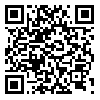1- Tehran university, TDepartment of Human Geograohy and planning , Zayyari@ut.ac.ir
2- Tehran university, Department of Human Geograohy and planning
3- Urmia university, Department of art and arch
4- PhD student of Geography and Urban Planning, Islamic Azad University،Science And Research Branch,
2- Tehran university, Department of Human Geograohy and planning
3- Urmia university, Department of art and arch
4- PhD student of Geography and Urban Planning, Islamic Azad University،Science And Research Branch,
Abstract: (2984 Views)
| One of the issues raised in the developing countries of the world is the issue of reducing damages caused by natural and man-made hazards. Various theories and paradigms such as crisis management and resilience have been proposed to reduce the level of risk vulnerability. Among the mentioned vulnerabilities is physical vulnerability. Now, the most important question that is raised in this research is whether according to the various studies that have been done in the field of physical vulnerability, apart from objective measures, the level of satisfaction of the residents has also been examined and whether it exists. Is there a relationship between objective and subjective indicators in this field? The case study studied in this research is Region 4 of Urmia City, which has a problematic context. This research is of an applied type and its method is descriptive-analytical, to examine this objective and subjective relationship of physical vulnerability, first objective variables were examined using spatial analysis and then subjective variables were examined using a Likert scale. questionnaire. And finally, this relationship has been measured using Pearson's correlation coefficient. The research results indicate that according to the correlation coefficient of 0.623 between subjective and objective variables; There is a significant relationship between the objective view (reality on the ground) and the subjective view (satisfaction of residents) in the field of urban physical vulnerability indicators. |
Type of Study: Research |
Subject:
Geography and Urban Planning
Send email to the article author
| Rights and permissions | |
 |
This work is licensed under a Creative Commons Attribution-NonCommercial 4.0 International License. |

This work is licensed under a Creative Commons — Attribution-NonCommercial 4.0 International (CC BY-NC 4.0)





